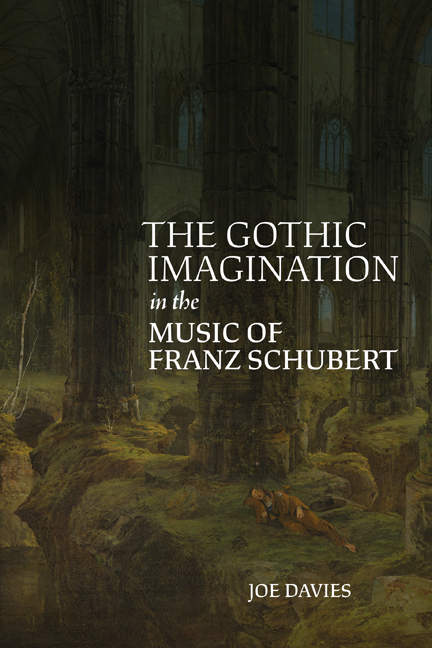2 - Doubles and Distortions
Published online by Cambridge University Press: 15 May 2024
Summary
‘Leute, die sich selber sehen’ (‘People who see themselves’)
—Jean Paul Friedrich Richter, SiebenkäsThe finale of Schubert's Piano Trio in E flat, D 929, composed in 1827, encapsulates the doubling that permeates the soundworlds of this chapter. The funereal theme from the Andante, cast initially in C minor, re-emerges in curious locations – first in B minor at bar 279, then in E flat minor at bar 795 – moments before the end of the piece (Example 2.1). In both instances, the theme, detached from its processional accompaniment, skims a texture of pizzicato chordal interjections in the upper range of the violin part and étude-like figurations in the piano part. Such reconfigurations position the funereal music, seemingly of the past, as returning in the present.
On first hearing, these repetitions may not sound out of the ordinary. Yet tracing their roots back to the theme's initial presentation in the Andante unsettles ideas of the Finale bringing about ‘resolution and closure’. Its first appearance in the upper registers of the cello (bars 1–21) carries signs of the disjuncture to follow, as it soars above the accompaniment, rooted in the dactylic pattern of death in Schubert's music, while confined by its restricted melodic compass (Example 2.2). Mournful on the surface, replete with disruptive undercurrents, the theme distorts the regularity of the funeral march through the accent on the second half of the bar (cf. bars 4 and 5), the dotted rhythmic motion, and emphasis on the minor iv. Here, as in all of Schubert's music, surface details run deep. Thus, when the texture is inverted in bars 21–40, the theme doubled in the upper ranges of the piano, the impression of hovering at the boundaries is intensified through the withdrawal from piano to pianissimo.
Returns of this kind, connected to and detached from their earlier incarnations, provide a backdrop against which to hear the doubles and distortions across the main case studies of this chapter: the Grande Marche Funèbre, D 859, the C minor Impromptu, D 899/1, and the F minor Fantasy for four hands, D 940.
- Type
- Chapter
- Information
- The Gothic Imagination in the Music of Franz Schubert , pp. 53 - 88Publisher: Boydell & BrewerPrint publication year: 2024

